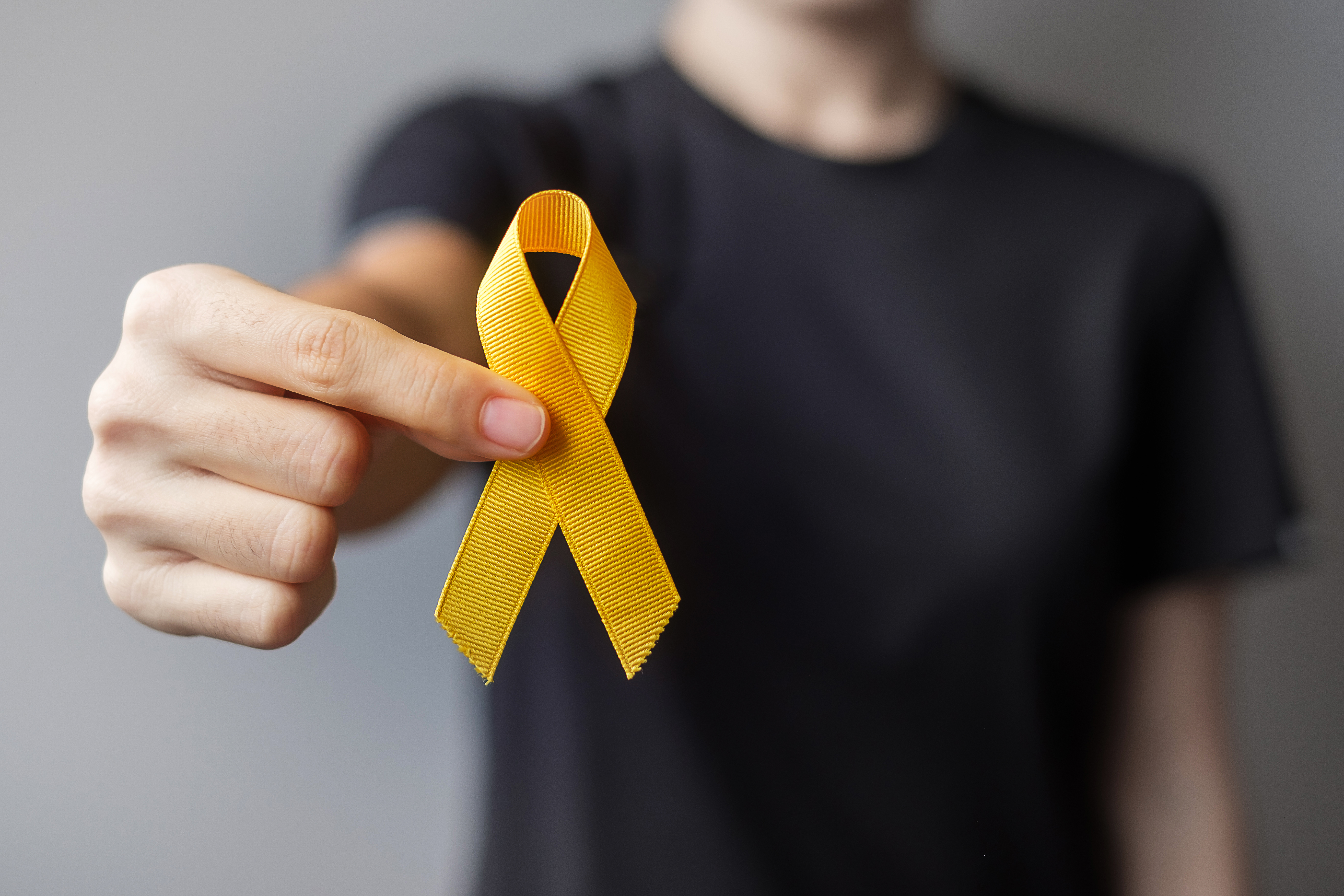
Globally, more than 700,000 lives are lost to suicide each year. For every suicide, there are devastating long-lasting effects on families, loved ones, and communities.
Suicide is linked to mental health suffering and moments of overwhelming crisis. Whilst there has been shown to be higher rates of suicide amongst vulnerable groups of people who may experience discrimination and isolation in their day-to-day lives, such as refugees and migrants; indigenous peoples; LGBTQIA+ persons; and those incarcerated in prison, there is no one archetypical victim of suicide. Anyone could find themselves at risk, but there is help available to everyone. Suicide is preventable, but we recognise that people suffering often experience challenges and obstacles. A key challenge is the stigmatisation of mental health issues and the taboo around suffering mentally.
A focus of the value of life itself
National Suicide Prevention Week aims to lessen the stigma and taboo around mental health suffering and around suicide, sharing the message that help is available and that suicide is preventable. It’s a week that emphasises the significance of community awareness, compassion, and proactive intervention. In the midst of this, it’s crucial to consider how we frame the importance of work being done to help prevent suicide – with a focus on the value of life itself.
In the realms of public policy and health care strategy, economic evaluations often dominate the conversation. Especially in this current government, analysts and economists frequently emphasise the cost savings of preventative treatments, arguing that preventing an illness, injury or even death is less costly than treating it once it has occurred. One poignant example of this dynamic comes to the fore when we discuss suicide prevention. While this is logically sound and provides a compelling reason for investing in preventative measures, it raises ethical and philosophical concerns – and here’s why:
1. The ethics of Economic Analysis in Suicide Prevention
We sometimes find ourselves in the position of evaluating the impact of preventable death or serious injury. Typically that’s to provide a justification (one might say business case) for investing in an intervention (usually focused on prevention).
This is not without its challenges. There are obvious and direct costs associated with the aftermath of suicide, or attempted suicide, including: costs to the health and other emergency services, lost workforce productivity, and support for families affected. And there is also the uncomfortable position to contemplate limiting the way we value a human life to the economic contribution someone might have been expected to make.
We hope readers will agree that there is much more to life than that.
Every life, regardless of economic status, age, or background, is invaluable. By focusing on cost savings, we risk marginalising certain groups of people. People who are in need of the most specialised support (which is costly) are often a group that includes vulnerable people. The challenges they are facing in life, like with their finances, health and wellbeing, leaves them vulnerable to all sorts of things – including suicide. Focusing on the cost savings which results in the potential cutting of services to these groups of people, could result in a complete failure to help them and in turn, a complete failure in preventing serious harm – including suicide. Even though you may not technically class these services as ‘prevention or early intervention’, for people who may be contemplating self-harm or death – this kind of help and support is prevention.
There’s a strong economic argument for investing in prevention: early intervention, mental health support, and public awareness campaigns can mitigate costs associated with suicide. However, the primary motivation for such interventions shouldn’t be economic savings but the intrinsic value of human life.
2. The routine use of intangible values
Some attempts have been made to capture the profound personal, familial, and societal pain that ensues from preventable death (not just in the context of suicide, but also fatal accidents). These often use ‘willingness to pay’ methodology: for example, simplistically, how much would the family of the deceased be willing to pay to have them back? It’s a (technically) valid economic methodology, but it falls so very far short of conveying the lost potential, the unfinished stories, or the impact of a family and community’s grief.
Beyond the calculable costs, the prevention of suicide upholds the values of compassion, care, and community. Every life saved is a family preserved, a story continued, and a testament to the importance of community support. The real “savings” here are the moments of joy, growth, and connection that the individual will experience and contribute to their community.
3. Re-framing the question
Ideally we’d like to see suicide prevention funded simply because it is the right thing to do for people, families and communities. Realistically, policy-makers often require more tangible justification for funding decisions. It is helpful to recognise the narrow view that is taken in framing the question in these exercises. For example “What are the costs of suicide to public sector agencies?” can be answered, but this should be accompanied by recognition that we’re taking a limited view.
Putting the Human Experience First
These conversations must extend beyond economic evaluations. As we recognise and support Suicide Prevention Week, it’s imperative to put the human experience first. While economic evaluations have their place, they must be contextualised within the broader tapestry of human experience and connection. As much as they are able to justify funding and resources, they should be secondary to the foundational belief in the worth and potential of every individual. By remembering the profound human implications of our strategies and decisions, we can create more compassionate, effective, and holistic approaches.
Be kind to yourself and be kind to others
To finish this blog on a more personal note, I would like to remind anyone reading that mental health is no less important nor worthy of help, rest, or compassion than physical health. Assigning a numerical value to the worth of a human life is akin to overlooking mental health issues simply because they aren’t as visibly manifest as physical health issues. You may not always be able to see mental suffering quite like a broken bone, or a physical illness, but it can be just as detrimental and painful. Collectively we must treat it as such, and prioritise looking after our mental wellbeing in the same way that we prioritise our physical health.
Be kind to yourself and be kind to others; you cannot always see what someone might be going through below the surface.
Emily Hunter, Research Analyst
—————————————————————————————————————————
Footnotes:
There are a number of organisations who are there for anyone who might need help or somebody to speak to:
‘We’re here, day or night, for anyone who’s struggling to cope, who needs someone to listen without judgement or pressure.’ You can speak to a Samaritan day or night, 365 days a year, by calling 116 123.
Papyrus Prevention of Young Suicide is the UK charity dedicated to the prevention of suicide amongst young people under 35. Any young person having thoughts of suicide or anyone with concerns for a young person who might be, can contact the HOPELINE247 through the details below:
Call: 0800 068 4141 // Text: 07860 039 967 // Email: pat@papyrus-uk.org
If you would prefer not to talk but want some mental health support, Shout offers a confidential 24/7 text service providing support if you are in crisis and need immediate help.
Text: SHOUT to 85258.
‘Supporting those bereaved by suicide because suicide always has company.’
Suicide&co is a charity supporting bereaved individuals, opening up the conversation around suicide-related grief: a space for those who are left behind. The ‘sidekick by Suicide&Co’ app’s unique personalisation features is working to break down barriers, reminding everyone that they have permission to grieve and tackle the stigma.
R;pple is a digital interceptive tool which ensures immediate support can be given to individuals contemplating self-harm or suicide through online searches. Technically speaking, R;pple is a browser extension compatible with desktop computers and laptops. Once R;pple is downloaded, an individual’s search for harmful material relating to self-harm and suicide would be intercepted.






